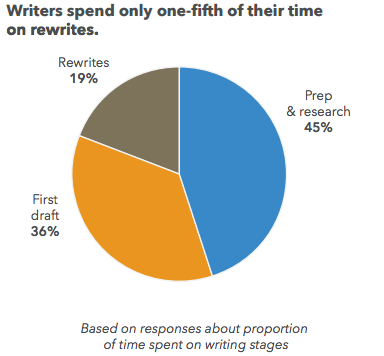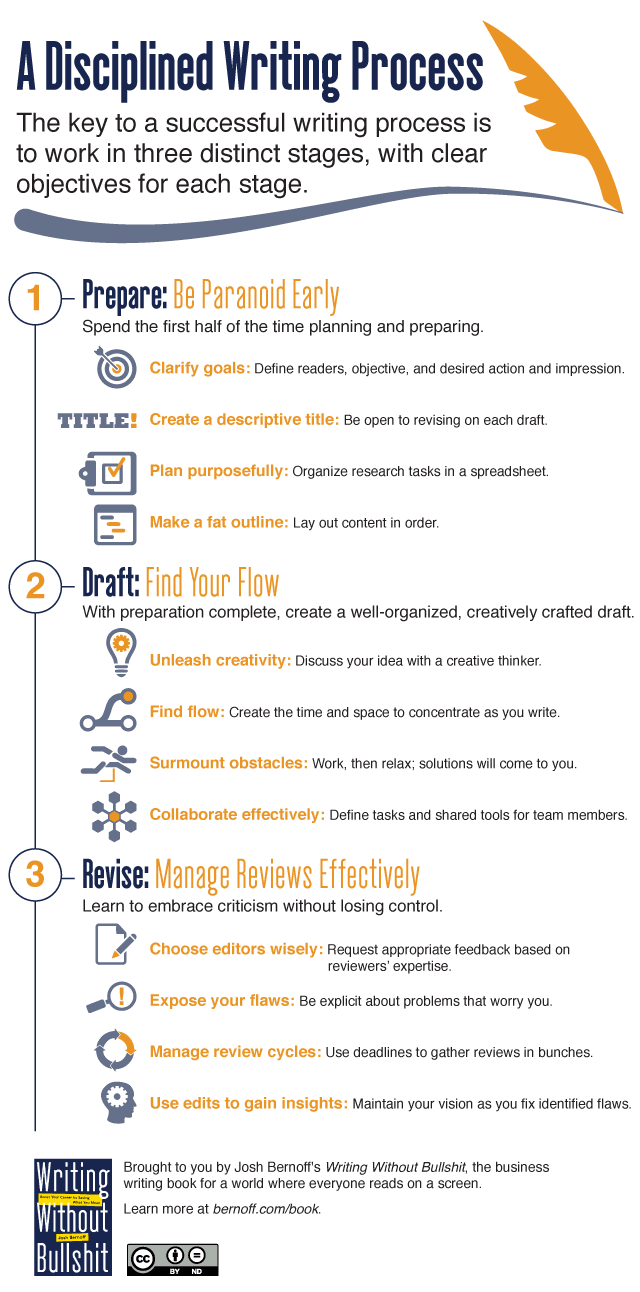Taming your writing process in three stages (infographic)
The typical business writing process is a disaster. I’ve seen it; I’ve lived it; I’ve picked up the pieces afterwards. And bad process creates bad results. For better quality with less angst, you need the discipline to work in three distinct stages.
The 3 P’s will mess you up
This advice is for writing projects that take a little effort — ones that you work on over a few weeks, and that other people need to review. If you’re working on projects like this, you’ve probably experienced the 3-stage process that I call the 3 P’s:
- Procrastinate. Spend the first half of the time doing other work. Because every time you sit down to write, you realize you’re still missing some of the information you need, and you get frustrated.
- Panic. At the last possible moment, put words down in a document. Interrupt yourself frequently as you write to contact people or look things up to fill in holes in what you’re writing (e.g. engineering specs, Web facts, research information).
- Pray. Send stuff out for review; give reviewers as little time as possible. Hope they don’t blow up your hard work.

Is it any wonder this process generates terrible results? This is why the people in my WOBS Business Writing Survey rated the material they read at an average of 5.4 out of 10 for effectiveness.
A more disciplined process: Prepare/Draft/Revise
The key to a successful result is to use your time wisely. That means you need intermediate goals for each stage.
- Prepare Stage: Be Paranoid Early. Any piker can be paranoid at the end of a writing process, when it’s too late. To motivate yourself in the beginning, you’ve got to be paranoid early. You should spend the first half of your process on preparation. That means doing research and gathering raw materials. Conduct a ROAM analysis to define your direction. Work on titles. And instead of drafting, make a fat outline — a summary of what you’re writing, with some meaty details.
- Draft Stage: Find Your Flow.
 Because you prepared all the materials ahead of time and have a good, solid fat outline, you have everything you need to start writing. Find the right space to unleash your creativity and work steadily toward a goal. If you’ve done it right, you’ll enter what the psychologist Mihaly Csikszentmihalyi calls a Flow State, in which you’ll be far more productive than a normal writer.
Because you prepared all the materials ahead of time and have a good, solid fat outline, you have everything you need to start writing. Find the right space to unleash your creativity and work steadily toward a goal. If you’ve done it right, you’ll enter what the psychologist Mihaly Csikszentmihalyi calls a Flow State, in which you’ll be far more productive than a normal writer. - Revise Stage: Manage Reviews Effectively. As you can see from the chart shown here, people spend less than one-fifth of their time on rewrites and reviews; they should set aside at least a third of the time for that. Managing reviews is a problem: only 33% of the writers in my survey who worked on projects said their review process was effective. The key is to tell each reviewer what you need from them, and to enforce deadlines to get it all back in time to act on it.
With a more disciplined process, you’ll have less stress, feel more productive, and get better results.
To help remind you what to concentrate on when, I’ve created the infographic below. If you want more detail, see Part 3 of my book, which includes 8 short chapters on how to master this process, from creativity to reviews.

One Comment